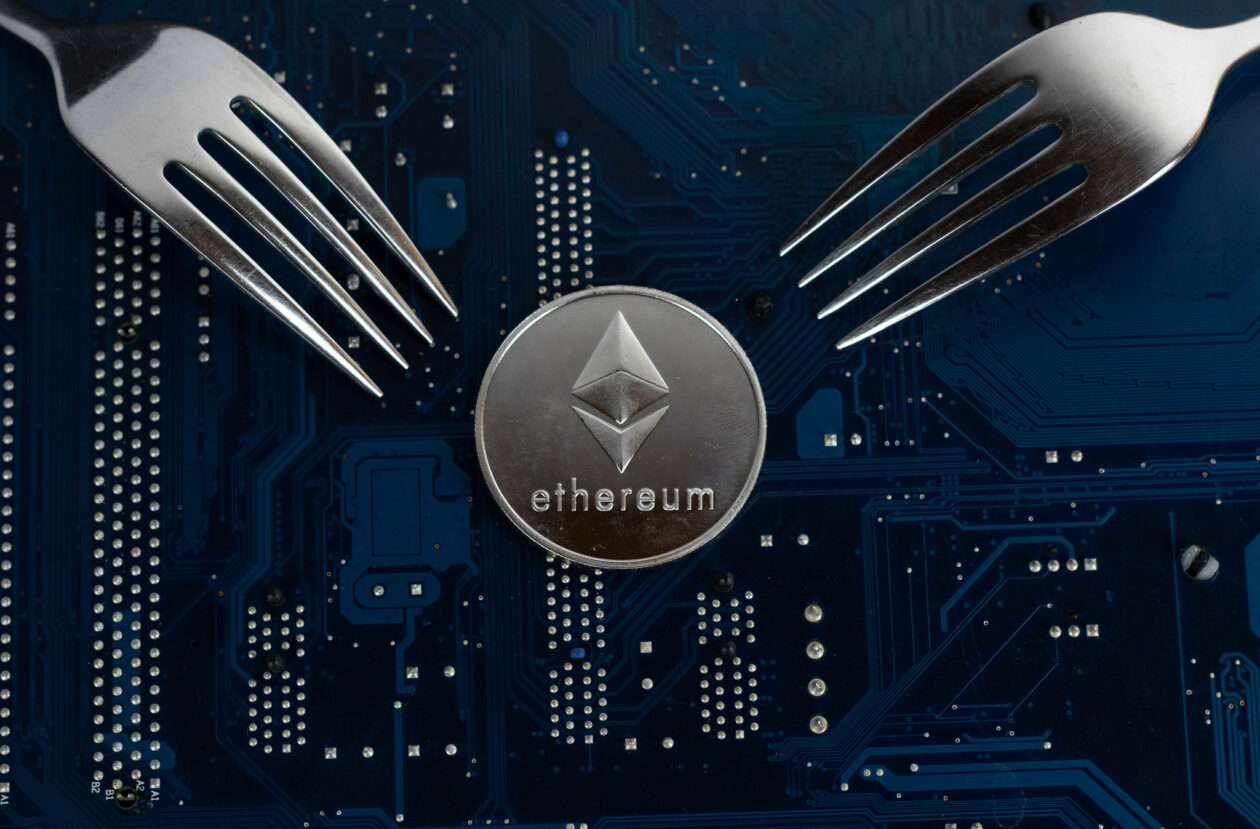The so-called “Merge” of the Ethereum network plans to take a blockchain with the most developers and a market cap of over US$200 billion to a cheaper, faster and less energy-consuming operating method. Ethereum miners don’t like it.
They argue changes made to the network through the Merge freezes them out, turning multimillion-dollar investments in computer hardware into stranded assets.
The response by miners is a plan to fork the blockchain to maintain the current proof-of-work (PoW) method and keep them in the business of validating transactions on the network and earning Ether tokens as payment.
That may sound like setting the stage for conflict and disruption, but Jonathon Miller, Australian head of the U.S.-based cryptocurrency exchange Kraken, told Forkast in an interview that the fork sounds dramatic, but he’s not concerned about it.
“I could fork Ethereum tomorrow [but] will people use that fork? That’s a different question,” he said. “That’s a question that miners have to ask themselves.” Ethereum is the network of choice for developers and it will remain that way for some time, he added.
Ethereum had roughly 4,000 active monthly developers in areas such as decentralized finance, or DeFi, non-fungible tokens (NFTs), and many others as of December 2021, far more than any other blockchain, according to venture capital firm a16z’s 2022 State of Crypto report.
Forks in the road
A PoW system requires miners to solve complex algorithms using massive banks of expensive, energy-guzzling computers to validate transactions on a blockchain and they are rewarded with that network’s token.
Proof-of-stake (PoS) systems, which Ethereum is transitioning to, are validated by users in accordance with how much of that network’s token they have “staked” back into the network.
The Merge is popularly likened to changing a plane’s engine mid-flight, it will see the Ethereum mainnet combine with the PoS Beacon chain sometime between September 16-19.
Shortly before that a “difficulty bomb” will trigger on the Ethereum network, drastically raising the energy and computational requirements to validate the network, therefore disincentivizing miners from continuing on the mainnet.
This is not the first major fork for the world’s second-largest blockchain. The current ETH mainnet is actually a fork of the original blockchain — renamed Ethereum Classic (ETC) — which was forked in 2016 to address a hack of 3.6 million Ether on the network.
That was a decision that split the community between those who believed it was against the ethos of blockchain where all transactions are supposed to be immutable, or unable to be changed, and those who wished to preserve the value of the network.
“I think in retrospect, some people who argued for that fork perhaps might have changed their point of view over time,” Miller said, adding there’s not much to be learned from that previous fork ahead of the Merge, as it was done under very different circumstances.
While both ETH and ETC have seen prices rise amid the interest in the lead-up to the Merge, ETC’s market cap is currently 97.5% less than ETC at just US$4.9 billion, according to CoinMarketCap.
Mining leader
One of the advocates for a PoW fork is Chandler Guo, a former cryptocurrency miner in China who now lives in the U.S. in Silicon Valley and is pulling together a team of developers to create an Ethereum fork that maintains its original consensus mechanism.
“Many miners would have to shut down their businesses [after the merge],” Guo said in a recent interview with Forkast.
Guo has received pushback from the Ethereum community. In early August, ETC Cooperative, an advocacy group for the ETC blockchain, sent Guo an open letter saying it doesn’t believe a PoW chain will work.
However, Ben Caselin, head of research and strategy at Seychelles-based crypto exchange AAX Inc., told Forkast he thinks it is possible, but he is unsure whether it will be worthwhile, as Ethereum’s strength lies more in its users and developers than its miners.
“[Miners] will fork a chain with a code exactly like Ethereum and continue mining, but they will not see the profits go anywhere in the long term,” he said. “Assuming that of course, the majority of people will be using and staking on the Beacon chain.”
Caselin is also not concerned about the fork having any impact on the Merge.
“With that much anticipation building for Ethereum POS,” said Caselin, “unless the miners in question can wreck the reputation of the current ETH network by a major hack, a double spend or something else that would convert other validators, they won’t be able to stop the merge.”
Rather than being concerned about a fork being disruptive, Kraken’s Miller welcomes it.
“Forks are normal; in fact, that’s how open-source software works. Every time that there is an upgrade on open-source software, there’s debate. This is the beauty of open-source software,” Miller said.
“All power to people who want to innovate. We might see some innovation as a result of the Merge that’s unexpected, which is a great thing.”

